Cheong won dang [Korea Quality] / 청원고택 [한국관광 품질인증]
0m 646 2021-04-05
3 Songsogotaek-gil, Pacheon-myeon, Cheongsong-gun, Gyeongsangbuk-do
+82-10-3530-6119 / +82-54-872-6119
Under joint management with the Korean Tea Association’s Yeongeun Culture Center, Chungwon Gotaek is a great place to enjoy traditional Korean tea time while experiencing a traditional Korean house where you will see all the features of an old Korean house as well as how people lived a slow and leisurely life in the past. Since Chungwon Gotaek only has one stand-alone guestroom that can be booked by only one couple/group at a time, it’s the perfect place to stay for leisure. The guesthouse has a separate tea room managed by the Yeongeun Culture Center, where you can enjoy traditional Korean tea while learning the proper way to drink tea in Korea, which is quite different from that of other Asian countries. Many Korean guests will agree that they feel at home. The guesthouse also serves Korean-style breakfast, which includes various side dishes that vary by season.
Song jeong Historic House [Korea Quality] / 송정고택 [한국관광 품질인증]
100.26298091228425m 8154 2020-09-10
15-1, Songsogotaek-gil Pacheon-myeon, Cheongsong-gun, Gyeongsangbuk-do
+82-10-8746-6690
Cheongsong-gun in Gyeongsangbuk-do is a small village blessed with a spring flowing with natural mineral water, a beautiful valley with a majestic waterfall, and a mountain densely covered with pine trees. Thanks to this superb natural environment, Cheongsong-gun was designated as a 'Slow City' in 2011. Songjeong gotaek (The Old House of Songjeong) is located in the village of Deokcheon in Cheongsong-gun, which is one of the three richest and most prestigious families in the region.
These three wealthy families are said to have produced millionaires for nine generations - from Sim Cheon-dae during the reign of King Yeongjo of Joseon (r. 17224-1776) to the 1960s. In particular, it was a seventh-generation grandson, Sim Ho-taek (pen-name: Songso), famous as one of the richest men in Joseon, who built Songso gotaek (Old House of Songso) along with three houses for his three sons, including Songjeong gotaek for his second son Sim Sang-gwang (pen-name: Songjeong) around 1880. As the Cheongsong Sim Clan has lived in the area for many generations, Cheongsong is known as the village of the Cheongsong Sim family.
Covering a total area of about 10,000m2, Songjeong gotaek has a tall and grand front gate that symbolizes the wealth of the family. Upon entering by the gate, the large outer courtyard comes into view, followed by a gate connecting to the Old House of Songso on the right, and a walking path connecting to a well and a pine grove on the left. The square-shaped structure consists of a sarangchae (detached building), chaekbang (library), and daecheongmaru (main floored room). Passing through the entrance, there are the main building and the inner courtyard. Notably, the chaekbang has retained its original appearance from the time when it was used by Sim Sang-gwang.
Although the house is very large, its interior is simply and modestly designed according to the virtues favored by classical scholars. The rooms are floor-heated in the traditional way (by ondol) using wood, decorated with traditional hanji (Korean paper), and equipped with traditional bedding.
Songjeong gotaek offers visitors a variety of experience programs designed to promote the form of Korean classical music known as Gukak. It holds three major musical events each year including a pansori folksong program and a fusion gukak concert, attracting an audience of anywhere from 200 to 800 people to the courtyard of the house. Sometimes, families hold parties to celebrate their parents’ 60th, 70th, and 80th birthdays.
The low hill situated behind the house has a quiet walking path.
Residencia Tradicional Songso Gotaek en Cheongsong (청송 송소고택)
126.49866876766565m 4225 2021-11-25
Songsogotaek-gil 15-2, Pacheon-myeon, Cheongsong-gun, Gyeongsangbuk-do.
+82-54-874-6556
La Residencia Tradicional Songso Gotaek se encuentra en el municipio de Cheongsong-gun, en la provincia de Gyeongsangbuk-do y data de finales de la dinastía Joseon.
Chalbanggong Head House [Korea Quality] / 찰방공종택 [한국관광 품질인증]
234.63066467143122m 5840 2020-09-10
23-8, Songsogotaek-gil Pacheon-myeon, Cheongsong-gun, Gyeongsangbuk-do
+82-54-873-6502, +82-10-9502-7611
The Chalbanggong Head House is a resting place in nature that is open to everyone. The house was built in 1933 as the head house of Chalbanggong Shim Dang, a 9th-generation descendant of Akeungong from Cheongsong Shim’s Family. The place was also used as a village school and is designated as local cultural heritage no. 13. The structure of the house is shaped like the Korean alphabet "ㄷ". The fact that the gate of the house is facing north is very unusual. The house is positioned next to the Songso Old House, which has 99 rooms, and is composed of Ondol rooms heated by firewood as well as a wide yard and a vegetable garden. The place provides a comfortable resting space for those who want to enjoy the atmosphere of a traditional Korean-style house that they cannot easily see in urban areas. The rooms are papered with traditional Korean paper and equipped with beddings. The house is located in a region that is so quiet you can barely hear a thing except the sound of birds and wind. There is an ancestral shrine in the head house that looks just like a warm grandma’s house.
Festival de la Manzana de Cheongsong (청송사과축제)
2.6 Km 36403 2023-09-05
Wolmak-ri, Cheongsong-eup, Cheongsong-gun, Gyeongsangbuk-do.
054-873-3686
El Festival de la Manzana de Cheongsong se celebra en octubre o noviembre de cada año para promocionar la excelente calidad de las manzanas cultivadas en el área. Cheongsong, que significa "zona limpia", tiene las condiciones perfectas para que las manzanas alcancen un sabor superior, ya que está rodeada de montañas cuya latitud promedio elevada favorece a estos árboles. Además, no hay fábricas industriales en los alrededores. El festival ofrece varios programas únicos para el entretenimiento de los visitantes y en el mercado se venden manzanas a buen precio.
Juwangsan Spa Tourist Hotel (주왕산온천관광호텔)
3.2 Km 16384 2021-08-10
315, Jungang-ro, Cheongsong-gun, Gyeongsangbuk-do
+82-54-874-7000
Juwangsan Spa Tourist Hotel is located approximately 15 minutes from Juwangsan National Park. The hotel has clean rooms, a Korean restaurant, banquet hall, and spa facilities. Guests may take advantage of the health programs offered at the spa or enjoy the hot springs sauna that uses alkaline water, which has been proven to heal chronic headaches and shoulder pain.
Juwangsan Mountain Seongcheondaek
5.5 Km 10745 2021-04-09
12, Seodang-gil Cheongsong-eup, Cheongsong-gun, Gyeongsangbuk-do
+82-10-6711-6427
Seongcheondaek House with about 300 years' history is an old hanok guesthouse located in Cheongun-ri at the entrance to Juwangsan Mountain, which can be reached by driving along Yongjeoncheon Stream from Cheongsong County in Gyeongsangbuk-do. With the tranquil surrounding atmosphere among houses in the alley, the house features a typical square-shaped structure of the mountain region.
Seongcheondaek House is presumed to have been bought by Im Chun-seop, a high-ranking official during the reign of King Gojong (r. 1863-1907) of the Joseon Dynasty, but its exact construction date is unknown. It was designated as National Folklore Cultural Heritage No. 172 in 1984.
This cozy hanok house consists of the main gate with straw-thatched roof, square-shaped Anchae (Women’s Quarters), middle gate, Sarangbang (master’s room), tea room, old stable, Daecheongmaru (hall between rooms) overlooking the courtyard with beautiful scenery, and so on. In particular, guests can enjoy a romantic atmosphere from Daecheongmaru by appreciating the scene of falling raindrops or melting snow from the edges of the eaves.
The Munganchae (gate building) consisting of a bathroom and a kitchen has a straw-thatched roof and a renovated interior for the guests’ convenience. The square-shaped Anchae is composed of two guestrooms (Sarangbang and Anbang) and a reading room (Utbang). The rooms feature a traditional construction style with cozy and clean interior items including a small wooden table as well as clean beddings. In addition, a kitchen is situated in front of Anbang, displaying traditional kitchen appliances including a fireplace and two large iron pots, unlike a modern-style kitchen in Munganchae. Daecheongmaru of Anchae offers an open view of the outdoor landscape through two large wooden windows. In addition, a deep groove in the middle of the yard in front of Daecheongmaru catches one’s eyes. The groove is said to have been made due to the rubbing of the foot on the ground when weaving hemp cloth hundreds of years ago.
Guests can enjoy relaxation both during daytime and nighttime under a starry sky in the yard where a small wooden bedstead and a stone table are situated. Moreover, the house provides folk games such as neolttwigi (Korean see-sawing game) and tuho (pitch-pot) as well as the family art therapy program wherein family members can understand each other better through a painting and drawing activity. Surrounding tourist attractions include Juwangsan National Park and Jusanji Reservoir.
Museo Folclórico de Cheongsong (청송민속박물관)
7.2 Km 15718 2022-08-05
Juwangsan-ro 222, Cheongsong-eup, Cheongsong-gun, Gyeongsangbuk-do
Situado en el Parque Nacional del Monte Juwangsan (en Cheongsong, Gyeongsangbuk-do), el Museo Folclórico de Cheongsong abrió sus puertas en 1999 para promocionar la historia y cultura del municipio y sus alrededores. El museo ofrece exhibiciones interiores y exteriores y una sala de archivos. La sala de exhibicione interior dispone de materiales educativos relacionados con la agricultura y costumbres de Cheongsong. Exhibiciones como la sala de invitados tradicional, la sala de costuras, artículos de uso diario y de porcelana de Cheongsong, ofrecen la oportunidad de conocer cómo vivía la gente en el pasado. La sala de exhibiciones exterior reproduce una taberna tradicional, una noria), un molino de piedra que usaba la fuerza del caballo o el buey, un monumento de protección y prosperidad y piedras naturales utilizadas para el culto. También hay tótems tradicionales (llamados jangseung o sotdae), que esperan a los visitantes en la entrada del museo.
CheongSong folk&Arts Village [Korea Quality] / 청송 한옥민예촌 [한국관광 품질인증]
9.6 Km 6658 2020-12-12
494, Juwangsan-ro Budong-myeon, Cheongsong-gun, Gyeongsangbuk-do
+82-54-874-9098
'Cheongsong Hanok Folk Arts Village is situated within the Cheongsong Tourist Site, which is maintained and operated by the Cheongsong Culture & Tourism Foundation. The Cheongsong Tourist Site consists of the Hanok Folk Arts Village, which is an accommodation houses, Pottery Village, Exhibition Center, Museum, restaurants, and other convenient facilities. The Pottery Village provides a hands-on experience program for visitors who want to try their hand at making Cheongsong white porcelain, a renowned cultural heritage of Cheongsong, and consists of various interesting structures including a dugout hut-type workshop built with rubble and mud. The Exhibition Center consists of the Cheongsong White Porcelain Exhibition Pavilion and the Simsugwan Pottery Pavilion, while the Museum consists of the Folk Exhibition Hall, which displays a variety of Cheongsong’s traditional cultural assets, and the Ggotdol Museum, which exhibits ggotdol (naturally-patterned rocks) found only in Cheongsong. In addition, guests can use the various restaurants, seminar room, sports facilities, and nature trail located within the Cheongsong Tourist Site. Cheongsong Hanok Folk Arts Village is composed of seven hanok houses, namely, Daegamdaek, Yeonggamdaek, Jeongseungdaek, Hunjangdaek, Chambongdaek, Gyosudaek, and Saengwondaek, each of which is named after its principal characteristics. Thus, Daegamdaek, Yeonggamdaek and Jeongseungdaek have many rooms with a courtyard and a wooden floor, while Saengwondaek and Chambongdaek are simple thatched houses. Each hanok house has a different size and structure, and is equipped with high-quality antique furniture made by artisans, and bedding. Cheongsong Hanok Folk Arts Village also has special traditional spaces that are rarely found in other hanok accommodation, including a barn, warehouse, and traditional kitchen that are not currently used but which exhibit the traditional features of hanok. Each house is equipped with a modern bathroom, toiletries, and hairdryer, while communal toilets and a shower room are situated outside the houses.
Aldea de las Artes Jirye (지례예술촌)
10.7 Km 6136 2021-05-21
Jiryeyesulchon-gil 427, Imdong-myeon, Andong-si, Gyeongsangbuk-do.
+82-54-852-1913
La aldea se creó con la construcción de la Presa Imha de Andong. En el año 1986, el área de Jirye-ri, Imdong-myeon, de la ciudad de Andong, se encontraba en peligro de hundimiento, por lo tanto, el actual jefe de la Aldea de las Artes Jirye, Kim Won-gil, había trasladado la pequeña aldea hacia un sitio más seguro, detrás de una montaña, instalando 10 edificios. Luego en el año 1990, el Ministerio de Cultura lo había designado como la Aldea de Creatividad Artística, por lo que hasta el momento es utilizada como un espacio de entrenamiento para los trabajos de los artistas. Hay muchas presas multifuncionales construidas en el país, pero esta fue la primera que gracias a la idea de una persona, se ha podido preservar el patrimonio cultural y también establecerlo como un espacio artístico.
Posee un paisaje natural maravilloso, ya que por la noche el cielo es bordado de estrellas y hasta también pasean volando las luciérnagas. Lo único que se escucha, son los cantos de los insectos y el soplo del viento, y, por las mañanas, el lago se viste de la niebla húmeda, por lo que presenta otro escenario mágico y misterioso. El paisaje natural se viste de distintos colores, según cada estación, primavera, verano, otoño e invierno. Visitando la aldea, tendrá la posibilidad de experimentar de aquellas actividades básicas de la vida, recolectar verduras, frutas y setas de pino, cazar peces, y, también degustar de los platos típicos de la región de Andong. En particular, la otra gran experiencia, es que tendrá la oportunidad única de alojarse en la habitación con ondol (sistema de calefacción tradicional), dentro de una construcción de madera que posee 350 años de antigüedad, la que también fue declarada como material patrimonial por la provincia de Gyeongsangbuk-do. Todos los detalles de la casa, será motivo suficiente para que pueda disfrutar del ambiente.
Aunque el papel principal de la aldea es ser utilizada como un espacio de trabajo para los artistas, también es famoso para los turistas extranjeros, que lo frecuentan para conocer y experimentar la cultura coreana. El sistema de baño que utiliza la energía solar, y por la instalación de internet, ha facilitado el acceso de las mujeres y de los turistas extranjeros. Cada año es visitado por más de 5.000 personas.
![Cheong won dang [Korea Quality] / 청원고택 [한국관광 품질인증]](http://tong.visitkorea.or.kr/cms/resource/32/2528932_image2_1.jpg)
![Song jeong Historic House [Korea Quality] / 송정고택 [한국관광 품질인증]](http://tong.visitkorea.or.kr/cms/resource/75/2573875_image2_1.jpg)
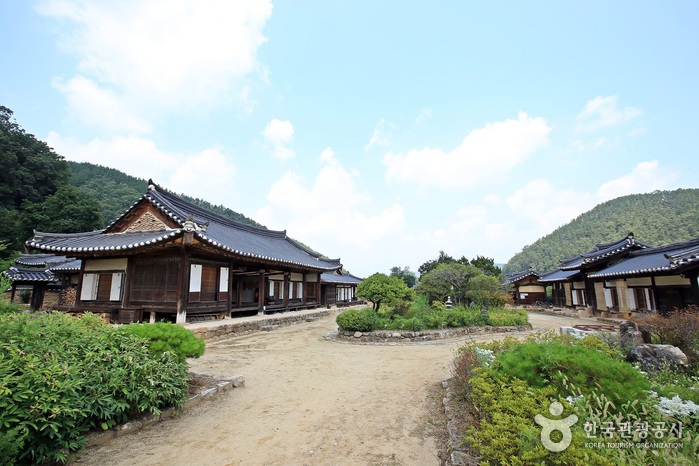
![Chalbanggong Head House [Korea Quality] / 찰방공종택 [한국관광 품질인증]](http://tong.visitkorea.or.kr/cms/resource/07/2528907_image2_1.jpg)
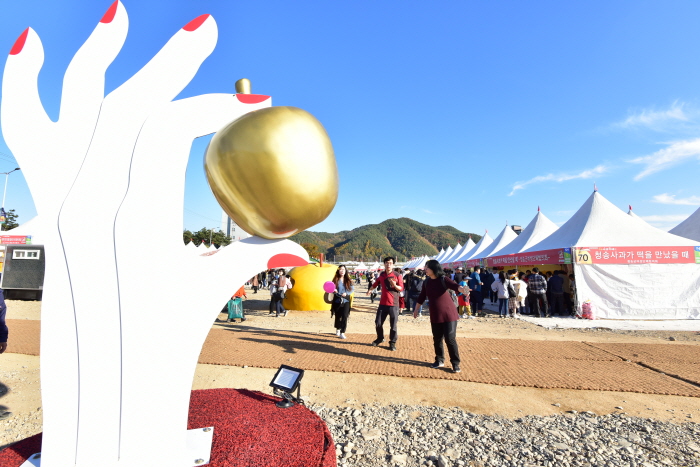

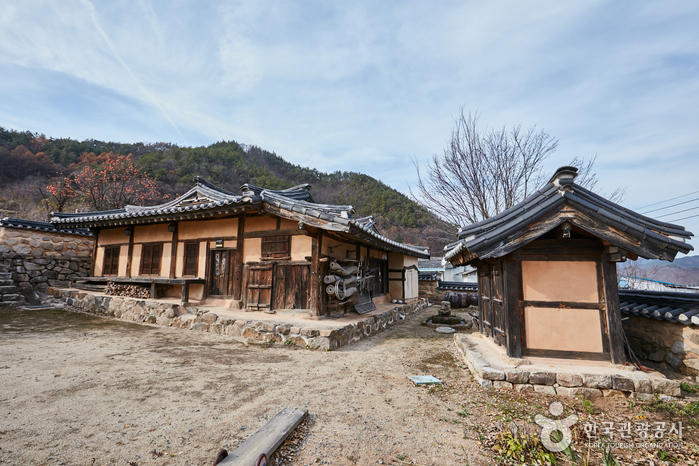
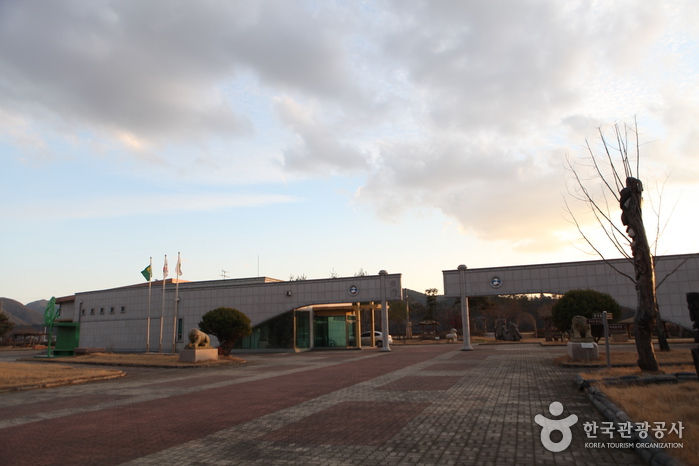
![CheongSong folk&Arts Village [Korea Quality] / 청송 한옥민예촌 [한국관광 품질인증]](http://tong.visitkorea.or.kr/cms/resource/14/2048414_image2_1.jpg)
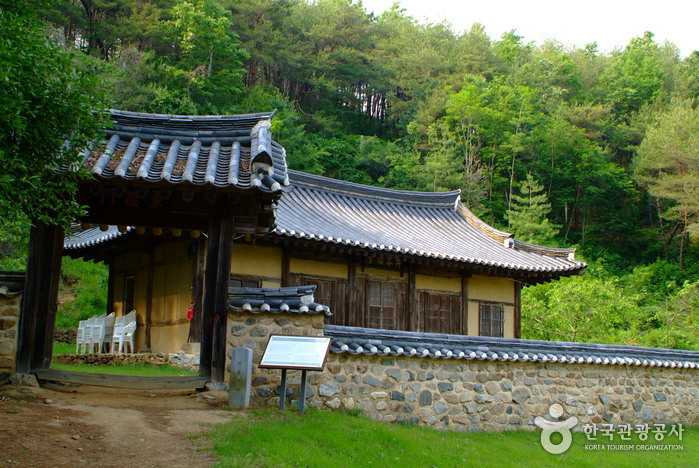
 Español
Español
 한국어
한국어 English
English 日本語
日本語 中文(简体)
中文(简体) Deutsch
Deutsch Français
Français Русский
Русский